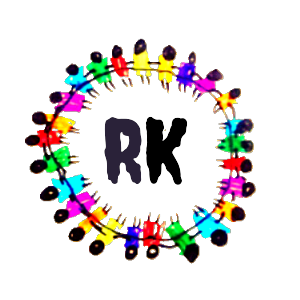Lists in HTML provide a way to organize and present information in a structured format. There are two main types of lists: ordered lists (<ol>) and unordered lists (<ul>), each containing list items (<li>).
1. Ordered Lists (<ol>)
Ordered lists are used to present items in a sequential order, typically with numbers or letters as markers.
<ol>
<li>First item</li>
<li>Second item</li>
<li>Third item</li>
</ol>Output:
- First item
- Second item
- Third item
2. Unordered Lists (<ul>)
Unordered lists are used to present items in no particular order, typically with bullet points as markers.
<ul>
<li>Apple</li>
<li>Orange</li>
<li>Banana</li>
</ul>Output:
- Apple
- Orange
- Banana
3. List Items (<li>)
List items (<li>) are used to define individual items within ordered or unordered lists.
<ul>
<li>Red</li>
<li>Green</li>
<li>Blue</li>
</ul>
<ol>
<li>First step</li>
<li>Second step</li>
<li>Third step</li>
</ol>Example:
<!DOCTYPE html>
<html>
<head>
<title>Lists Example</title>
</head>
<body>
<h2>Ordered List</h2>
<ol>
<li>First item</li>
<li>Second item</li>
<li>Third item</li>
</ol>
<h2>Unordered List</h2>
<ul>
<li>Apple</li>
<li>Orange</li>
<li>Banana</li>
</ul>
</body>
</html>Output:
Ordered List
- First item
- Second item
- Third item
Unordered List
- Apple
- Orange
- Banana
Lists are useful for presenting information in a structured and easily digestible format, making them a common feature in web design.
Links and Images:
Links and Images
In HTML, links are created using the <a> (anchor) element, and images are included using the <img> (image) element. Both elements support various attributes to specify the destination URL for links and the source URL for images, among other properties.
1. <a> Element (Hyperlinks)
The <a> element is used to create hyperlinks, allowing users to navigate to another webpage, a specific section within the same page, or perform other actions like sending an email.
Attributes:
href: Specifies the URL of the linked page or resource.target: Specifies where to open the linked document. Common values include_self(default, opens in the same window),_blank(opens in a new window),_parent, and_top.title: Provides additional information about the linked document, often displayed as a tooltip.
Example:
<a href="https://www.example.com" target="_blank" title="Visit Example">Visit Example</a>2. <img> Element (Images)
The <img> element is used to embed images into HTML documents.
Attributes:
src: Specifies the URL of the image.alt: Specifies an alternative text description of the image. This is important for accessibility and SEO purposes.widthandheight: Specify the dimensions of the image in pixels. These attributes are optional but recommended to prevent layout shifts as images load.title: Provides additional information about the image, often displayed as a tooltip.
Example:
<img src="image.jpg" alt="Description of the image" width="300" height="200" title="Image Title">Example:
<!DOCTYPE html>
<html>
<head>
<title>Links and Images Example</title>
</head>
<body>
<h2>Hyperlink Example</h2>
<a href="https://www.example.com" target="_blank" title="Visit Example">Visit Example</a>
<h2>Image Example</h2>
<img src="image.jpg" alt="Description of the image" width="300" height="200" title="Image Title">
</body>
</html>In this example:
- The
<a>element creates a hyperlink pointing tohttps://www.example.com, opening in a new window, with the text “Visit Example”. - The
<img>element displays an image with the specified source, alternative text, dimensions, and title.
By utilizing these elements and their attributes, you can create interactive and visually appealing content within your HTML documents.
